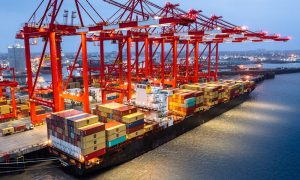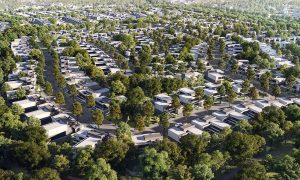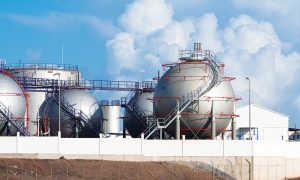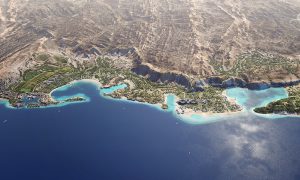Investing in first-class formwork
Five experts on formwork reveal the dangers of implementing poor or counterfeit systems and uncover the latest, most fitting solutions for a variety of construction applications
 What dangers are posed by the implementation of poor formwork?
What dangers are posed by the implementation of poor formwork?
Friedrich Kerschebaumer: The danger of poor and under-designed formwork systems lies in the security on construction sites. The risk of a failure while casting is much higher and workers can be injured.
Patrick O’Sullivan: Concrete behaves heavily when poured; the pressures exerted can become a real safety risk. Therefore, building with concrete requires highly-developed technology to make the most of it.
Paul Williams: There are two distinct issues here: 1. the technical specifications and capacity of the product and 2. the adequacy of design. The associated risks are high — at the forefront of considerations should be safety, formwork failures can and do cost lives. In addition, failures cause disruption and delays to construction schedules and can result in significant extra costs.
Roger Ratcliffe: Inadequate formwork design can lead to collapses, with fatal consequences in many cases.
Thomas Day: Poor formwork systems become overloaded; this may lead to the collapse of the formwork system.
This will damage the structure being built and possibly injure workers. To compensate this, suppliers of poor formwork systems may add extra material to their design because they are not confident in the properties of their system, so called ‘fear props’.
Adding extra material is not of benefit to contractors.
Is counterfeit formwork an issue in GC countries?
FK: Counterfeit formwork is a big problem in GCC countries because formwork suppliers have no experience in statical calculation or the potential health and safety dangers onsite.
PO: Counterfeit products are an issue in any country. The difference between wearing a fake Rolex watch on your wrist and employing cheap counterfeit building equipment is that the latter is a safety issue. Considering that good quality concrete results can only be achieved using top-quality equipment and ingredients; using counterfeit formwork is dangerous and shortsighted.
A simple example illustrates this: a formwork panel quality controlled and tested to take concrete pressure of approximately 100 kN/m² will allow the site to pour to a height of four metres without considering concrete type/mixture, flowability etc. Try the same with fake panels and the site may collapse under the concrete!
PW: We have witnessed a large increase in copy products being offered in the market over recent years. The biggest issue with counterfeit products is that they are not usually made to original product/technical specifications.
Substitute materials are used and usually less attention is paid to quality control. While a product may physically appear to be the same as an original — often the grade of material used in the fabrication is not to original design specifications (for example, the grade of steel, thickness etc). The biggest risk to contractors is that the project designs incorporating these products as part of a system or solution are generally based on the original product specifications.
A greater risk to the industry and to formwork companies is that substandard materials can contaminate quality products, formwork suppliers and contractors need to be particularly vigilant in terms of identifying copy product from original.
Formwork suppliers (as designers and manufacturers of the product) have the capacity and trained people to properly assess and identify copy equipment, for contractors, however, the task is much more difficult.
TD: The test for any formwork is whether it meets defined standards. Not all formwork available in the GCC countries will meet these defined standards as this region is a developing market. However, the quality of the formwork being used is improving.
Can you give any recent examples of the consequences of implementing inadequate formwork in this region?
PW: There are many examples. Recently we saw the collapse of a complete bridge span; it was constructed using copy products, but designed using the original manufacturer’s technical specifications. There have been other cases in the UAE and in Kuwait where entire floor slabs of buildings have also collapsed due to this reason. It is common in these cases that the thickness and grade of steel used in the false-work system is not to specification.
Aside from the larger catastrophes that occur and attract publicity and attention, there is a larger number of formwork failures that are associated through the use of counterfeit formwork accessories; for example, copy tie systems etc.
Why do buyers opt for counterfeit or inadequate solutions?
FK: Buyers see the cheap price, but they do not think about the consequences of buying counterfeit or inferior systems, such as a lack of adequate technical support and safe-assembly training.
PO: Buyers would opt for a counterfeit or inadequate solution due to a lack of knowledge or expertise in concrete construction; otherwise they would not take such a risk. It’s like sending a Formula One team onto the track in the hope of winning the world record on wooden bicycles.
PW: We work in a cost-driven industry.
RR: The usual reason for selecting inferior material is price so if the system is a lot cheaper than others on the market; this provides an early clue that the source may be questionable.
TD: Price is one reason why buyers opt for inadequate formwork solutions. They may not understand the risks of poor formwork, they may not work for a company that takes health and safety seriously or perhaps they don’t work in a jurisdiction that demands the use of adequate formwork systems by law.
How can a buyer distinguish between counterfeit- and genuine brands?
FK: The buyer should ask for technical support, statical calculation of the system and enquire whether technical training for workers is included. By asking these questions, buyers will be able to distinguish very quickly whether the formwork is counterfeit or not and whether the supplier can be trusted.
PO: Buyers will be supported through the service, expertise and consulting offered by leading formwork manufacturers. These companies will offer engineering support from the projecting phase all the way to supervision onsite. Suppliers of counterfeit formwork don’t have these expertise to offer.
PW: In some cases distinguishing between genuine brands and counterfeit ones can prove to be difficult as more often than not there is little difference in the physical appearance; it is the quality or the grade of the material used that represents the risk. It is recommended that the buyer invites inspection of the goods by a reputable supplier, who will be better equipped and positioned to identify inferior grade products, and can conduct load tests on the components.
RR: Before approving any system, qualified engineers should check the contractor’s proposals and supplier’s calculations and sign them off once approved by all concerned.
The supplier, contractor, consultant and engineers have a joint responsibility in selecting the system. Price should not be number one criteria. Furthermore, sources of copied systems should be closely examined for quality of products and assurance of the grade of material used to ensure they are up to standard. Load tests of systems should be provided on major projects to ensure adequacy and certification should be provided by a recognised testing laboratory.
TD: We are more than willing to educate buyers in this regard. The more developed the market becomes the more individual buyers will become educated in formwork systems.
What should a buyer do if they encounter a supplier selling copies?
PW: The goods should be immediately isolated from any other materials being used on the project. Proper investigation and assessment of the material should be undertaken. Where inferior products are identified and confirmed as the same, these products should be destroyed.
How do you ensure your products are safe, reliable and high quality?
FK: Every item Peri supplies is quality checked before it leaves our stockyard. Furthermore, before casting items onsite, our site supervisors check the assembled system and certify this to our clients if required.
PO: We have certified quality management through stringent testing and a good track record. We also show our commitment to international organisations dedicated to advancing concrete expertise and quality.
PW: Like all reputable formwork suppliers we have rigorous quality assurance procedures and material inspection routines, moreover, staff are trained to identify copy products from originals. This is particularly important to avoid contamination of quality stock.
A trained eye can usually identify an inferior product, in the cases where this is not possible tests are to be conducted.
TD: GHI’s manufacturers and suppliers are proven companies that produce materials to meet defined standards. Our company quality-assurance scheme checks supplier’s standards are good.
Do your products carry certification?
FK: PERI is carrying the industry ISO 9001:2008 certification.
PO: We have achieved a number of certifications including: DIN ISO 9001 quality certification for all 40 Meva locations in 30 countries; CE safety certification for Meva formwork and access systems, as well as numerous other industry-recognised accolades.
PW: All our products are designed to British standards and are manufactured by internally-approved ISO certified suppliers. Our company has developed an in-house quality management system, which is used by our quality assurance managers to assess materials, suppliers and manage production. All products have manufacturer markings for identification of the source and type of goods and the date of manufacturing.
TD: Our products are certified to meet defined standards and we design formwork solutions that are backed up by calculations.
What major Middle East projects has your company supplied?
FK: We have supplied The Cube Hotel Apartments at Dubai Sports City, and the Regent Emirates Pearl Hotel and the Reem Island mixed-use development both in Abu Dhabi, among many others.
PO: We have worked on the Burj Khalifa in Dubai, the Al Nadha Tower and the Al Hamlan Tower, both in Sharjah, and Al Lulu Towers in Manama, Bahrain, among others.
PW: We have been involved in numerous major projects across the region. Current examples include Dubai International Airport, the Oman Majalis, Basra Sports City in Iraq and Jedideh Tower in Lebanon, as well as lots more.
RR: Our systems have been used worldwide for more than 25 years, to name a few applications; the UK—France Channel Tunnel, Taiwan’s high-speed rail viaducts, Bangkok’s elevated road and rail system, the Mecca-Jeddah Expressway, and recently the Muscat Expressway in Oman, the Saadiyat Bridge crossing in Abu Dhabi and the Business Bay crossing in Dubai.
What are your biggest-selling items in this region?
FK: Peri’s biggest-selling product is the GT24 lattice girder, while the biggestselling systems in wall formworks are the Vario system and Trio panel formworks. The most popular systems for slab formworks are the Multiflex system and the Table solutions.
PO: Our most popular products in the Middle East are our climbing technologies (MGC guided climbing and MAC automatic climbing), our slab formwork system called MevaDec, a heavy-duty wall system called Mammut 350 and support frame Meva STB 450, an all-plastic formwork.
PW: RMD’s aluminium false-work systems are the most popular product lines at present.
TD: Our biggest-selling items are TriTec (our original steel panel wall formwork system) and Multiflex (our timber beam and prop slab support system). Our special steel formwork capabilities for example, for bridge piers and columns, have experienced a significant surge in business levels.
Which regions are your main markets and has this changed recently?
FK: Our main markets in the UAE are still Dubai and Abu Dhabi. We also supply many projects in Oman.
PO: We have shifted our emphasis on Dubai to include surrounding regions, mainly Saudi Arabia, Qatar and Bahrain.
PW: In recent years the UAE market has proved to be our largest, however, this has changed and we are expanding our focus and activities across Arabia, North Africa, the Levant and India.
We have recently established ourselves in Saudi Arabia and have operations in Al-Khobar, Riyadh and Jeddah. We see Saudi Arabia as one of the most promising markets in the region.
RR: With the impact of the global economic downturn large in Dubai, our focus has shifted to other regions in the Middle East and Africa, including Saudi Arabia, Kuwait, Yemen, Oman and Libya, where significant opportunities are under offer and discussion. Also since we have worldwide markets we are exploring further afield for large-scale projects.
TD: The main markets out of our Dubai office are the UAE, and the wider Middle East and North Africa. The volume of business we experience in Saudi Arabia has increased significantly.
Have you launched any new formwork products?
FK: We launched Liwa lightweight wall formwork, which does not require the use of a crane to implement.
PO: Meva is about to introduce a measuring technology for determining a concrete-setting time. It is an ultrasonic measuring device that can be employed onsite. The device will enable concrete contractors to correctly design formwork to take the real pressure that concrete will exert.
PW: This year we launched a self-climbing core formwork system called Tru-Lift and recently secured a supply order on a project in Jebel Ali for the system.
TD: We have three new products. We will design formwork according to a contractor’s actual inventory.
We can repair and provide top-up material where required. Secondly, we have introduced TriTec Light. This is a crane-independent wall formwork system. Third, we have introduced Roundflex; a freely-adjustable circular wall formwork system.
What emerging formwork trends have you noticed?
PO: There has been a definite and consistent shift to high-end technologies for safety reasons. The logic is simple; highly-developed formwork systems are easier to assemble and most often fool-proof. This avoids costly and dangerous errors.
Even unskilled staff can be employed and the learning curve is low and short. Safe work is quality work.
PW: There has been a move away from the low-cost, high-labour formwork systems in favour of lightweight, labour-efficient systems that provide added benefits in terms of safety and cycle times.
TD: There is evidence of a professional approach being taken to formwork. For example, the use of systems that offer construction speed (table systems) and health and safety.
A trend towards increased safety, especially edge protection to prevent falls from height, should be welcomed. Although the larger construction companies are meeting international standards, perhaps the smaller companies have some work to do. Buyers in the UK do not have the choice of selecting poor or nonstandard formwork as they are either unavailable or would not be approved by main contractors. Formwork discussions in the UK often concern build methodology and the most suitable overall formwork solution for the project. The GCC is moving towards this approach.
What has been the most significant innovation in formwork recently?
PO: The replacement of plywood by an all-plastic facing that is 100% woodfree is the most significant advancement. We believe Meva was the first to introduce this technology in all of its formwork products, completing the switch-over in 2004. Notably in the GCC states this has had an enormous impact on the concrete contractors’ work, since the new product is immune to heat or cold, doesn’t swell or shrink, absorbs no moisture, is completely repairable and can be cleaned using a high pressure washer — features that plywood never offered.
The Burj Khalifa was built using this technology for a simple reason: the facing never needs to be replaced.
This avoids down-times, which, at a building height of 600m-plus would have meant an enormous disruption in work flow.
How has your company fared during the downturn?
FK: It’s more difficult to get money from some clients.
PO: We have been able to adapt to changing market conditions in some parts of the world quickly. This has enabled us to keep the company’s performance profitable — compensating market downturns in some other regions.













